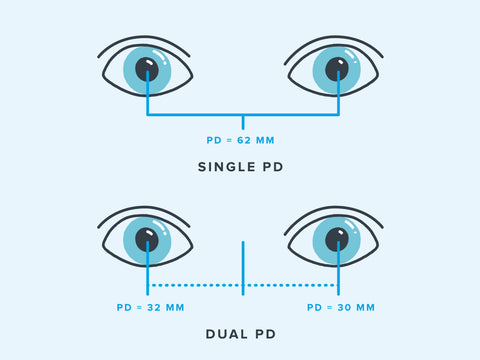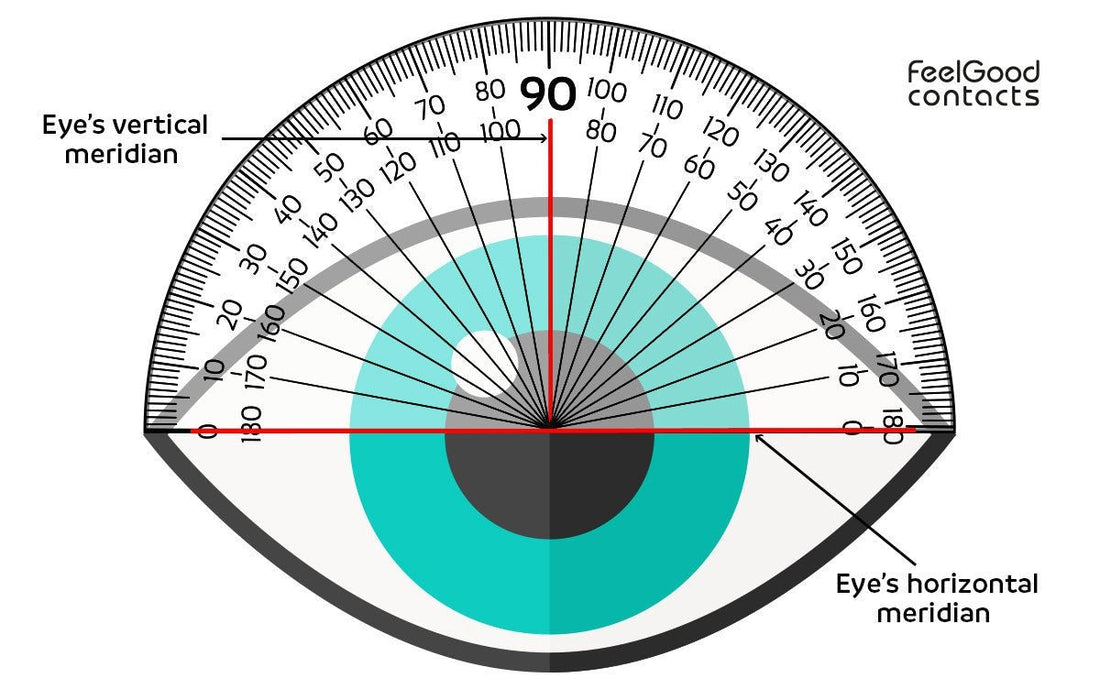Understanding Your Prescription
Eyes are the sensory visual organ, part of sensory nervous system. It reacts to visible light, helping the organism process and the understand their environment.
How did the eyes evolve?
Based on the Origin of Species, the first eyes were formed in unicellular organisms. Then eye was just a spot, called eyespots. They helped the organism to detect the presence and intensity of the light. The reason being, these organisms use photosynthesis to create food for themselves. Detecting the light source is crucial for their survival. Over the years the eyes have evolved from a spot to a depth complex organ helping the organism see its environment clearly.
How does the eye work?
Humans are driven by curiosity. Our eyes have been playing a key role so that so 80 percent of our learnings comes it. The eye is the second complex organ in the human body. It has more than 2 million working parts. All these works together so that the brain can process and understand the information.
First let’s discuss about the different parts of the eye,

Cornea - Clear Dome Structure for bending the light.
Pupil - The dark opening in the middle of eye.
Iris - The colorful part of eye which makes the pupil expand or contract.
Lens - The part behind iris responsible for focusing the light onto retina.
Retina - Light sensitive membrane responsible for transforming light into electric signals.
Optic Nerve - Responsible for transferring electric impulse from eye to brain.
Here are the steps that the eyes take to produce a clear image,
- The light that is reflected back from the objects passes through cornea, the front layer of eyes. The light is bend as it passes.
- The light passes through the pupil. The Pupil is the black opening in the center of the eye.
- Depends on the light intensity, the iris expands or contracts. The iris is the colorful part made up of muscles controlling the amount of light entering.
- Then the light passes through a lens. This lens once again bends the light and this makes the image inverted.
- Finally, the light reaches the retina. Retina contains photoreceptors, made of rods and cones responsible for transforming light to electric impulses.
- The optic nerve connecting the eye to brain, is responsible for transferring the electric impulses from the eye to brain.
In a summary, the light is focused onto retina which converts it into electric impulse then transferring it to the brain. This process is entirely dependent on the perfection of eyeball shape, cornea shape, lens clarity. If there occurs an imperfection, vision problem occurs. So, what are the common vision problems?
The Common Eye issues,- Myopia or Nearsightedness
- Hyperopia or Farsightedness
- Astigmatism or blurry vision
All the above are the refractive errors caused by the deviation in the eye’s shape. This causes the light not to focus directly on retina causing the errors. The amount of correction you need to correct that is called as Diopters.
What is Myopia or Nearsightedness? Why it occurs?

Nearsightedness as its known generally, makes your distance vision blurry. The objects nearer would appear clear though. It occurs when the cornea is too curved or the eyeball is too long. This makes the image to get focused just in front of retina.
What is Hyperopia or Farsightedness? Why it occurs?

Farsightedness makes the close-up objects appear blurry while the objects in distance would be clear. It occurs when the cornea is too flat or the eye is too short. This makes the light to focus just behind the retina.
What is Astigmatism? Why it occurs?
Astigmatism occurs when the light is not dispersed across the retina. This causes the vision to become blurry. It can occur in tandem with myopia or hyperopia.
What are the major causes of eye problems?
The following are the major factors,
- Genetics – Passed on from the parents to their children
- Prolonged screen time damages the eye tissues
- Lack of time spent outdoors might also be a problem.
How to rectify common eye issues?
All these eye problems can be rectified by contact lenses, prescription glasses or with an eye surgery.
Measuring Pupillary Distance (PD): An Essential Step in Eyewear Fitting
If you're planning to buy prescription goggles, you must have heard the term "pupillary distance (PD)." PD is the distance between the centers of your pupils and plays a crucial role in determining the right prescription lenses for your eyewear. But what exactly is PD, and how is it measured? Let's dive into it.
Pupillary Distance: What is it, and why is it important?Pupillary distance (PD) is the distance between the centers of your pupils, measured in millimeters. It's a critical measurement that helps optometrists determine the correct position of your eyes in the lenses of your eyewear. When the center of your pupils aligns with the center of the lenses, the prescription can be accurately calculated, and you'll have clear vision.
Single PD vs Dual PD: What's the difference?Most people have a single PD, which means that the distance between the centers of their pupils is the same for both eyes. However, some people may have a dual PD, which means that the distance between their pupils is different for each eye. In such cases, two separate measurements are taken for each eye to ensure an accurate prescription.

The average pupillary distance for adults is between 54mm and 74mm. If your PD falls within this range, it's considered normal. However, it's essential to remember that everyone is unique, and there's no set standard for what's considered normal.
Measuring Pupillary Distance: How is it done?Measuring your pupillary distance is a quick and straightforward process. It can be done in a physical optometrist's office, or you can measure it at home using a ruler and a mirror. Here's how to do it:
- Stand in front of a mirror and relax your eyes.
- Hold a ruler vertically against your nose, making sure it touches the bridge.
- Close one eye and line up the ruler so that it's centered over the open eye's pupil.
- Measure the distance from the center of the pupil to the ruler in millimeters.
- Repeat the process for your other eye.
In conclusion, pupillary distance is an essential measurement that helps optometrists determine the correct position of your eyes in your eyewear. It's a quick and straightforward process to measure your PD, and you can even do it at home. Whether you have a single PD or a dual PD, make sure to have it measured before you buy your next goggles. Happy shopping!
How much does an eye exam cost?
Once in 24 months, you need an eye examination from a legal optometrist before you can order your lens. The cost depends on if you plan to take on simple refractive exam or a complete exam. It would normally cost from $50 to $200.
Cost of Prescription Lenses:
Based on your examination, you would have a single focal, a bifocal or a transition lens. A unifocal lens would be around 125$, a bifocal lens would be 200$ and the multifocal be around 300$.
How to read your prescription?
Eye prescriptions can be very confusing, it has a lot of numbers, letters and its usually a chart with rows and columns. Here we help you understand your prescription.

- OD – Oculus Dexter meaning Right Eye
- OS – Oculus Sinister meaning Left Eye
- OU – Oculus Uterque meaning Both Eyes
- NV – Near vision
- DV – Distance Vision
- PD – Pupillary Distance
- SPH – Sphere
- CYL – Cylinder
- BU – Base Up
- BD – Base Down
- BI – Base In
- BO – Base Out
- BC – Base Curve
- DIA – Diameter
- VA – Visual Acuity
- Pupillary Distance – The distance between your two pupils (Binocular PD) or distance from pupil to the center of nose bridge (Monocular PD) Measured by using Pupillometer. Useful in aligning the center of pupil with center of lens.
- Sphere – Correction for nearsightedness or farsightedness.
- Diopters – Unit of measurement of refractive index. Positive value for farsightedness and negative value for near sightedness.
- Cylinder- Correction for astigmatism.
- Axis – Unit of measurement of degrees. Number from 1 – 180 used for orientation for astigmatism correction.
- Add – Additional magnification for Presbyopia.
- Prism – Used for rectifying misalignment in eye movement which causes double vision.
- Base Curve – The curvature of the lens which would fit your eye curvature perfectly.
- Diameter – Diameter in mm for width of contact lens.
- Visual Acuity – Represents the sharpness of your vision. Here the phrase 20/20 means that yourself and a person without glasses are able to read same size letters from a distance of 20 feet.
Prescription Goggles at Snowvision:
Hopefully you have now grasped the terminologies and have a better understanding of your prescription. Now go ahead and check out our collection of Prescription goggles for ski or snow sports. Say bye to risky online shopping with our 60 days return and get a full refund.

